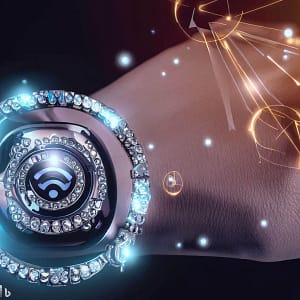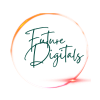Introduction
Wearable technology refers to electronic devices that are worn on the body and often feature sensors, connectivity, and processing capabilities. Smart watches and fitness trackers, as well as smart garments and augmented reality glasses, are examples of these technologies.
Types of Wearable Devices
Smartwatches
These wrist-worn devices perform functions other than timekeeping. They are capable of displaying notifications, tracking physical activity, monitoring heart rate, providing weather information, and allowing users to communicate with apps.
Fitness Trackers
These devices are mostly used for tracking health and fitness. They monitor steps, distance walked, calories burnt, and sleep habits, and frequently include features like as heart rate monitoring and GPS tracking.
Smart Clothing
This category includes garments with embedded sensors and connectivity, such as fitness shirts or socks that monitor vital signs, posture, or performance metrics.
Augmented Reality (AR) Glasses
These gadgets project digital information into the user’s field of view, augmenting the physical environment with virtual features. Contextual information, navigation aid, and immersive experiences can all be provided through AR glasses.
Virtual Reality (VR) Headsets
VR headsets fall within the category of wearable technology, while not being worn on a daily basis. By covering the user’s eyes and typically combining motion tracking for interactive experiences, they offer a truly immersive virtual environment.
Smart jewellery
Smart Jewellery is made to seem like ordinary jewellery pieces such as rings, bracelets, necklaces, or earrings. These accessories are frequently made from high-quality materials such as precious metals, gemstones, or alternative materials such as ceramic or stainless steel, allowing them to be worn as attractive things.
Smart jewellery is often integrated with wireless connectivity, allowing it to connect to smartphones or other devices via Bluetooth or similar technologies. It can receive notifications like incoming calls, text messages, or app alerts and discreetly vibrate or provide subtle visual indications to the wearer.
Many types of smart jewellery feature sensors that track various health and fitness data. They can track your steps, distance travelled, calories burnt, heart rate, and sleep patterns.

Functionality and Features
Health and Fitness Monitoring
Many wearable devices include capabilities such as step counting, heart rate monitoring, sleep tracking, and activity recognition to assist users in maintaining a healthy lifestyle and meeting their fitness objectives.
Notifications and Communication
Notifications for incoming calls, messages, emails, and app alerts are frequently provided by wearable devices. Some devices also enable users to reply to messages or make phone calls directly from the device.
Connectivity and Apps
The majority of wearables communicate with smartphones via Bluetooth or other wireless technologies. They have the ability to sync data with partner apps, allowing users to examine their health statistics, establish goals, and access additional features and services.
Personalization and Customization
Wearable devices often allow users to customize watch faces, choose preferred apps, set activity goals, and personalize settings to match their individual preferences and style.
Integration with Smart Home and IoT
Some wearables can connect and interact with other smart devices in the home, enabling users to control lights, thermostats, or other Internet-of-Things-enabled devices directly from their wearable device.
Work
Wearable devices can be used to access work-related information, such as email and calendars. They can also be used to control machinery and other equipment.
Challenges and Considerations
Battery Life
Battery life is an important factor for wearables since customers expect them to last throughout the day without needing to be recharged frequently. Manufacturers are constantly striving to increase battery efficiency and reduce power usage.
Data Privacy and Security
Wearable gadgets acquire sensitive personal data including health metrics and location. Maintaining user trust and compliance with privacy legislation requires strong data encryption, safe data storage, and user privacy controls.
User Interface and User Experience
Because wearable devices have limited screen real estate, designing intuitive user interfaces and providing seamless user experiences is critical. To improve usability, voice commands, gesture controls, and haptic feedback are frequently used.
Design and Fashion
Wearables need to strike a balance between functionality and aesthetics. Manufacturers focus on creating sleek, lightweight, and stylish designs to encourage widespread adoption and acceptance.
What is the Future of Wearable Devices?
Millions of wearable devices have been sold worldwide, with Apple, Huawei, and Xiaomi leading the market. More device connectivity, more applications, and more functionalities will be added. Energy harvesting, expanded health use cases, and increased data injection into virtual reality devices are just a few examples.
Conclusion
Wearable technology is continuously evolving, with improvements in sensor technology, battery life, and communication. These technologies are becoming more integrated into our daily lives, allowing us to better monitor our health, stay connected, and interact with the digital world. Wearable technology has the ability to improve our lives in a variety of ways.
We should expect to see even more ways to employ wearable devices to make our lives easier, healthier, and more pleasurable as technology advances.



